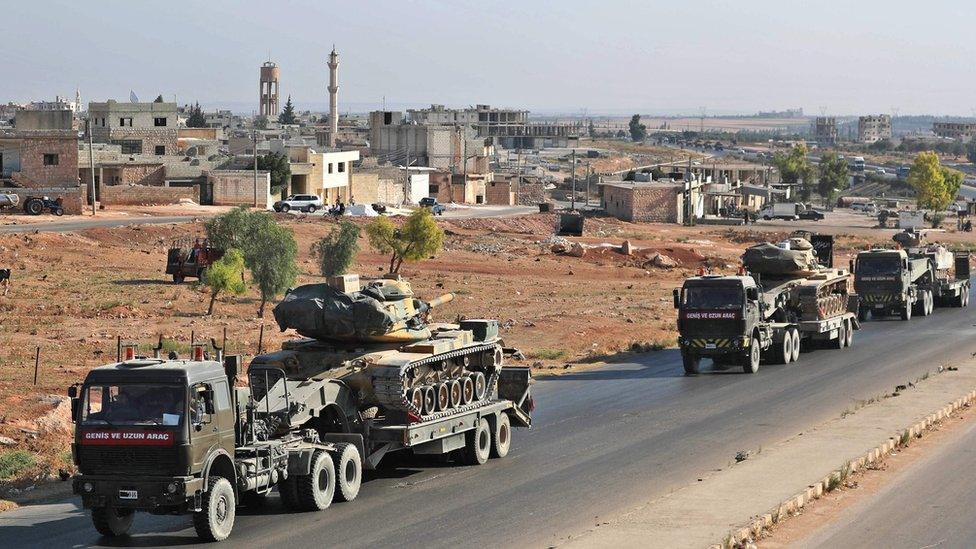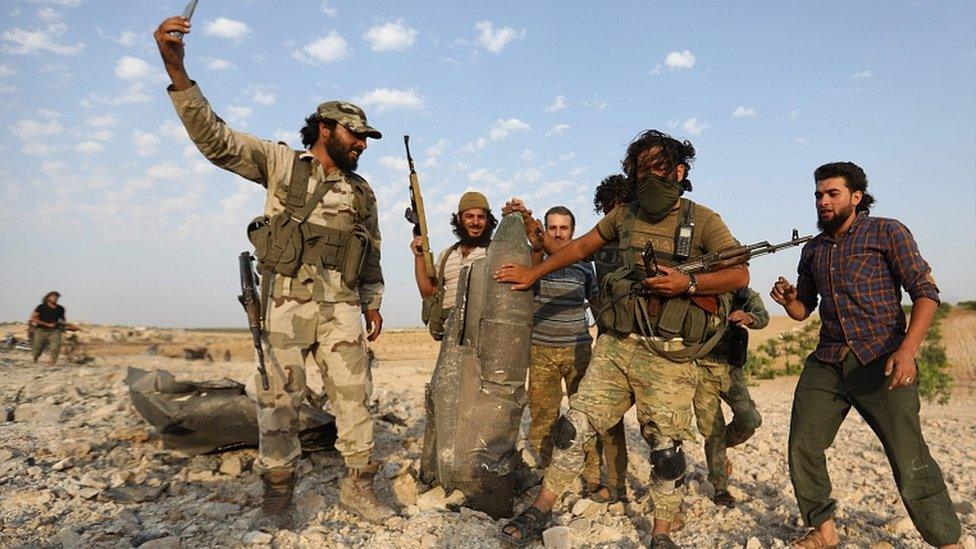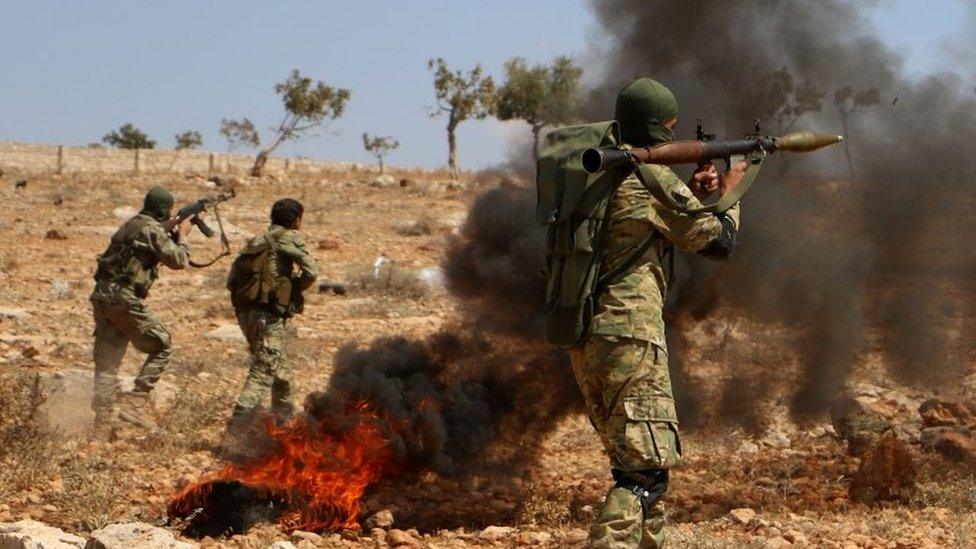Syrian civil war: 'Three killed' in attack on Turkish convoy
- Published

Syria has condemned the convoy as an act of aggression and says it is heading for the rebel-held town of Khan Sheikhoun
A Syrian government air strike aiming to stop a Turkish convoy reaching a rebel-held town in northern Syria has killed three civilians, Turkey alleges.
Another 12 people were injured in the attack in Idlib province on Monday, the Turkish defence ministry said.
Idlib, one of the few areas not under government control, was supposed to be protected by a buffer zone agreed with rebel-backing Turkey last year.
But government assaults have been on the increase since April.
Hundreds of civilians have already been killed as a result, and there are fears many more will die if the situation continues to escalate.
"This is our worst nightmare coming true," Jan Egeland, from the Norwegian Refugee Council (NRC), told the BBC.
"We have for years now warned against the ultimate catastrophe being Idlib, where there was no escape for three million civilians. There are some very bad militants inside.
"But a wholesale attack on this area of Idlib and adjacent northern Hama would mean that a million children would come in horrific crossfire, and it's that that now seems to be happening."
Why is Turkey sending a convoy into Syria?
Turkey, which backs some, but not all, the rebels, has forces in Idlib as part of last year's agreement with Russia.
According to Naji Mustafa, a spokesman for the National Liberation Front rebel grouping, the convoy was heading to one of its observation points with "reinforcements" when the attack took place.
An AFP correspondent who saw the convoy reported it included about 50 armoured vehicles, at least five of which were tanks.
The story of the picture showing a Syrian family's harrowing moment after an air strike
But Syria has said the convoy's arrival in the region is an act of aggression. It said the munitions would not stop government forces "hunting the remnants of terrorists".
According to the UK-based Syrian Observatory for Human Rights (SOHR), a Russian aircraft carried out strikes near the convoy on 19 August.
Turkey has said the attack breaches last year's agreement, with the incident raising fears of direct clashes between the countries.
Why is this happening now?
After eight years of war, the Syrian government is trying to win back control of the last rebel-held areas.
Government forces, backed by Russia, reportedly entered the northwest outskirts of Khan Sheikhoun on Sunday.
Khan Sheikhoun, which was hit by a Sarin gas attack in 2017, lies on a highway connecting Damascus to Aleppo and is a strategically important town in the south of the province.
If it is captured, it will mean the Syrian regime has effectively encircled a rebel-held area to the south, which includes a Turkish observation post in the town of Morek.
Mr Mustafa told AFP the convoy was heading to Morek.
A young face destroyed by war: The impact of an airstrike one year on
Syrian forces have now massed to both the east and west of Khan Sheikhoun, and air strikes are targeting the centre and surrounding villages.
Last week a Syrian government war plane was shot down in the area, hit by an anti-aircraft missile fired by militants, according to Syrian state news agency Sana.
Jihadist group Hayat Tahrir al-Sham (HTS) has claimed responsibility and released footage purportedly showing the captured pilot.
A colonel from a rebel faction confirmed to Reuters news agency that there were battles going on on the outskirts. Fighters from a Turkish-backed rebel force have joined the defence, he said.

The Syria crisis: Five questions, answered
How did the war start?
The country descended into war after President Bashar al-Assad's government used deadly force to crackdown on pro-democracy protesters, who took to the streets in March 2011 demanding political freedom.
Who is fighting who?
That's complicated: President Assad's regime is fighting rebel groups ranging from pro-democracy groups to jihadist extremists, while a number of foreign powers are providing support to various sides.
How many people have died?
It is not known exactly, as death tolls vary according to the source, but it is estimated to stand at more than 500,000 dead or missing.
How many refugees are there?
More than 5.6 million people have fled Syria since 2011, with another 6.6 million internally displaced, according to the United Nations.
What has happened to President Assad?
His position looked tenuous at one point during the eight year conflict, but thanks to international allies like Russia and Iran, President Assad has won back control of most of Syria, and has set his sights on Idlib.

- Published15 August 2019

- Published17 September 2018
